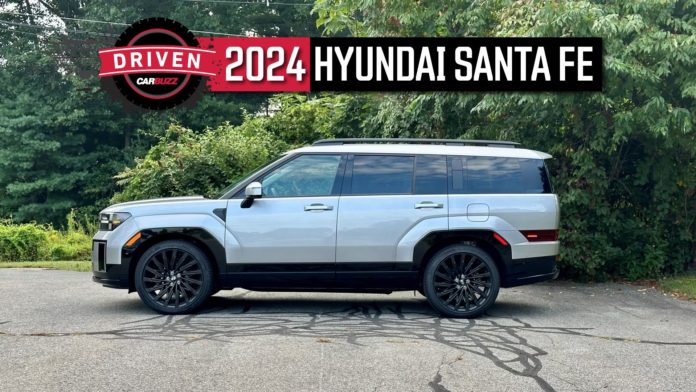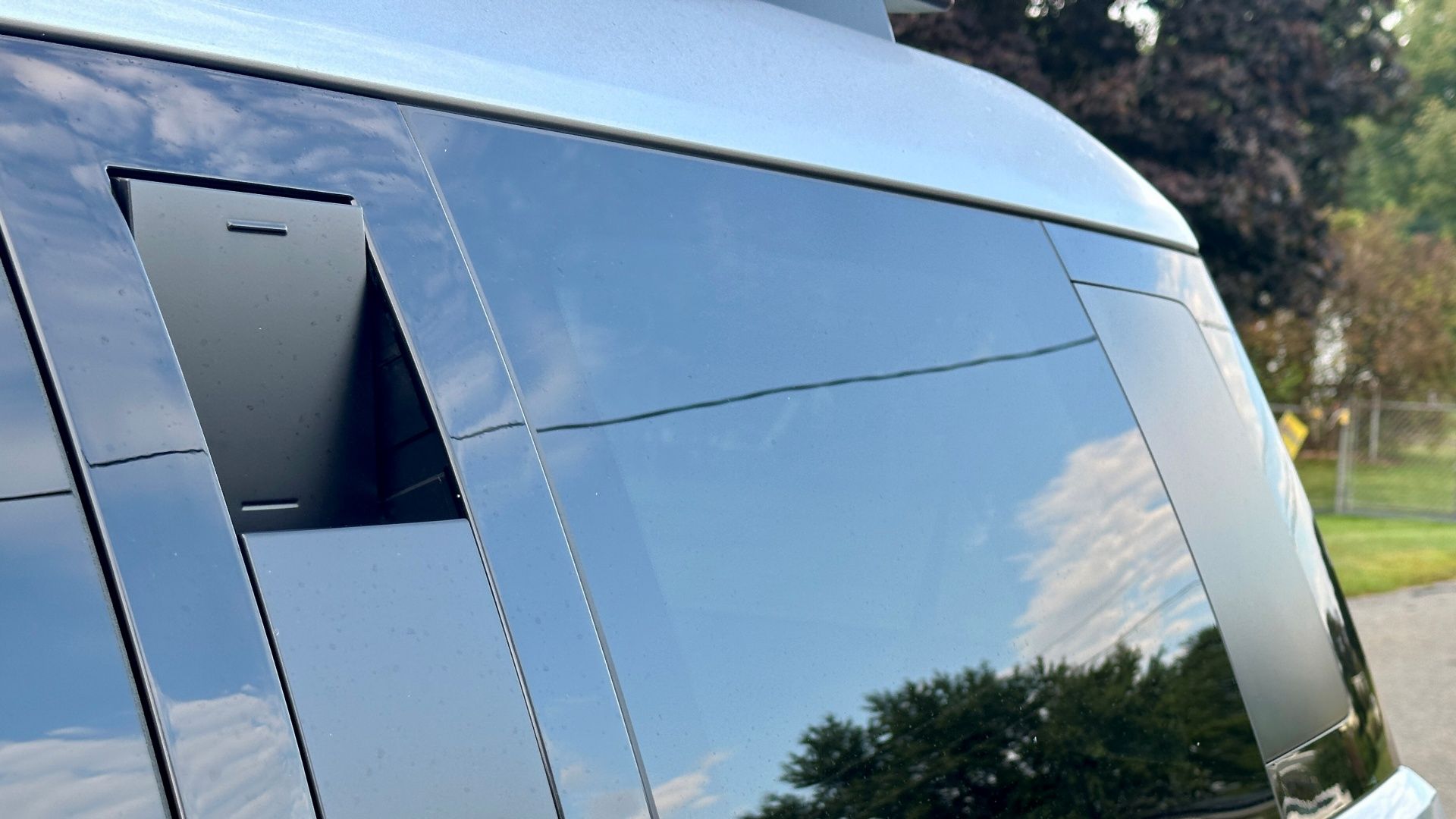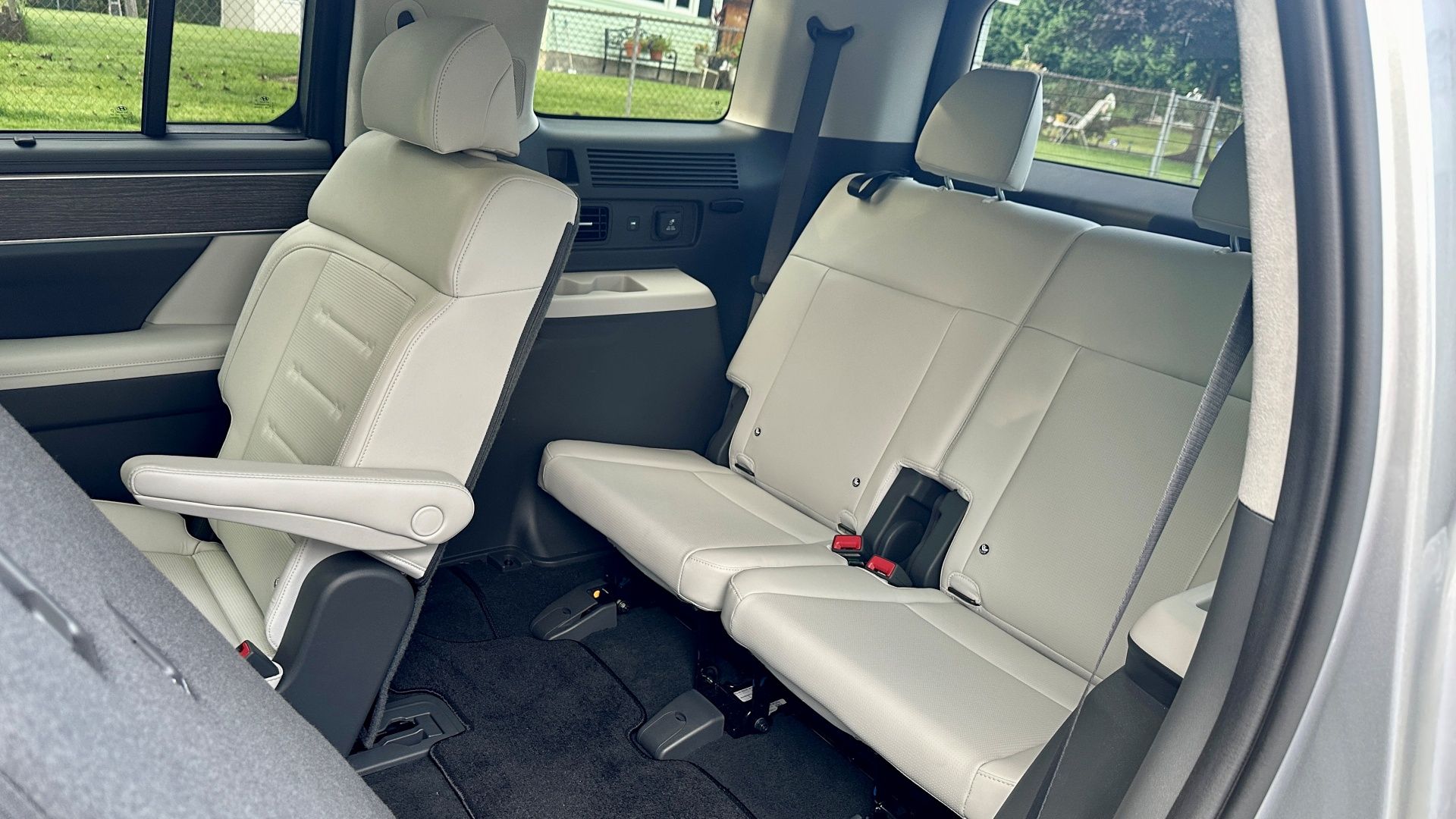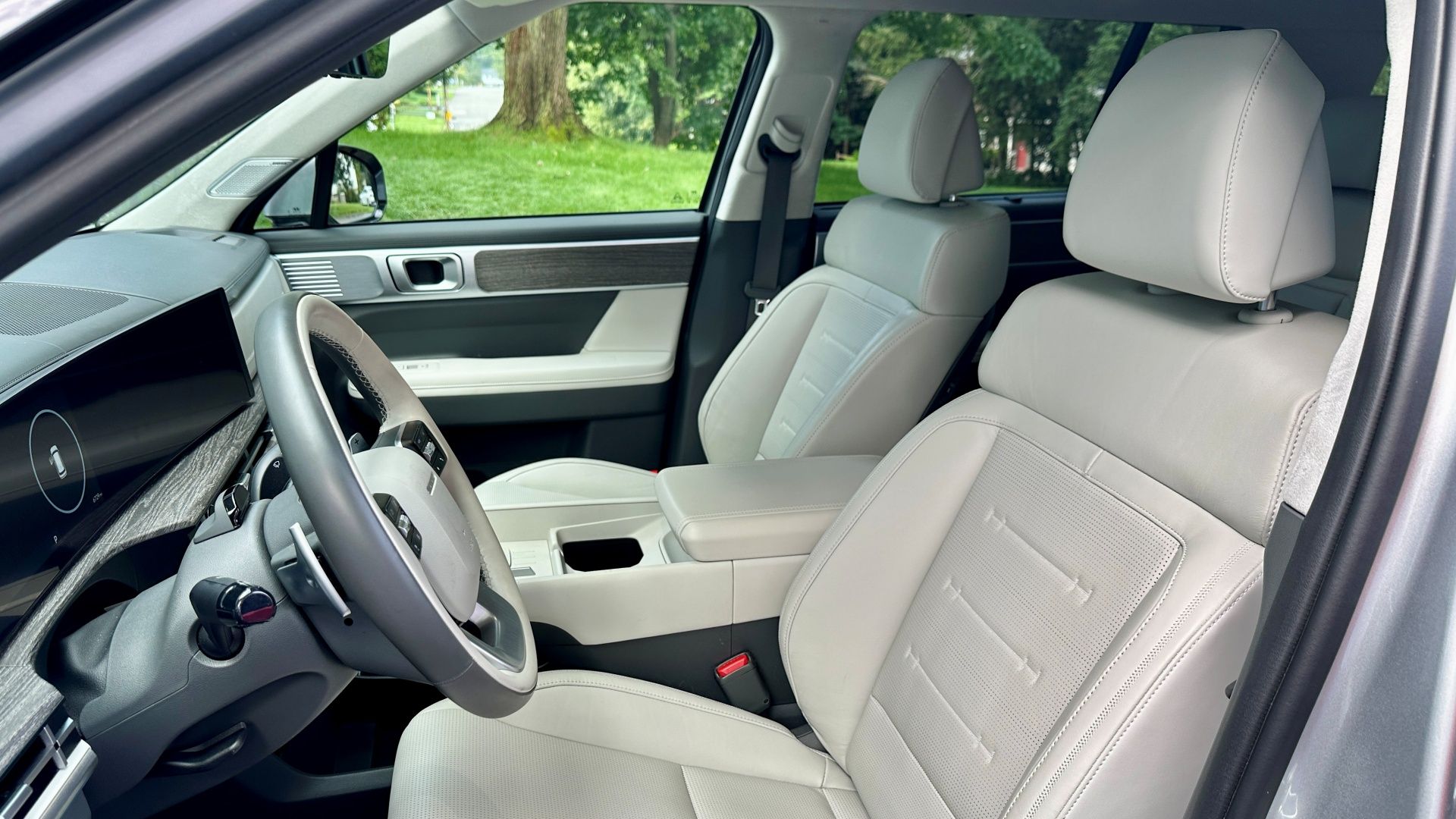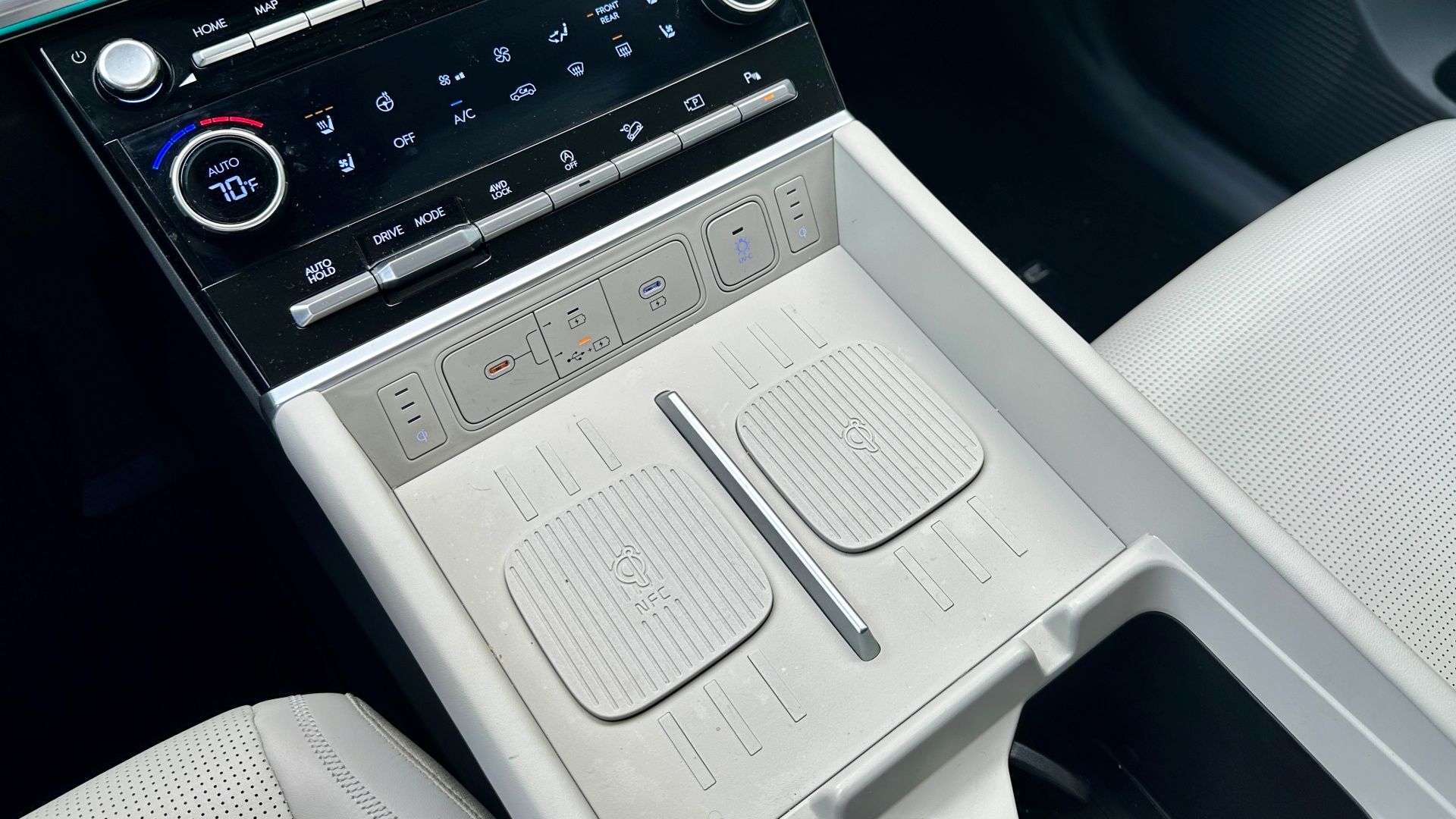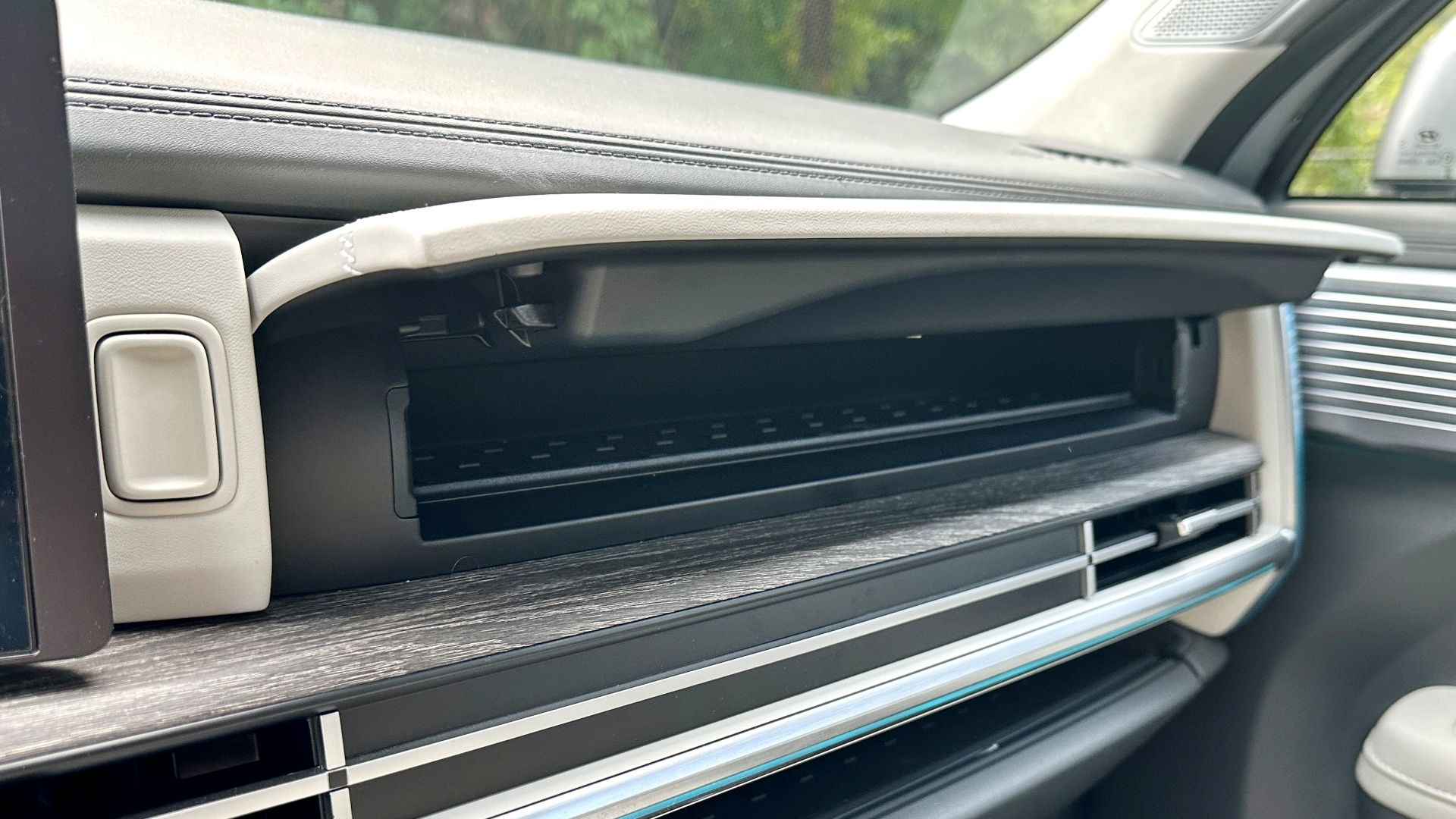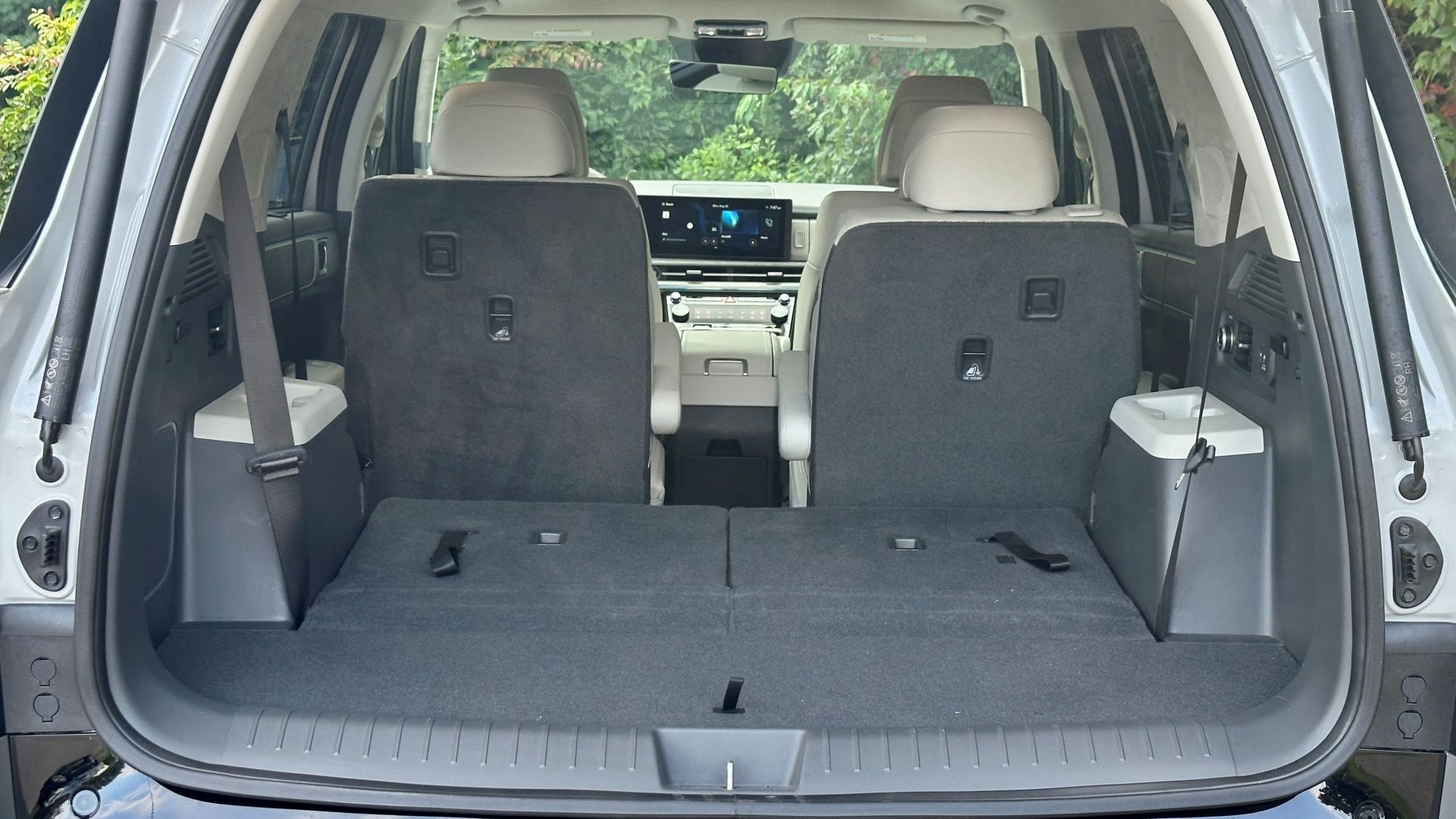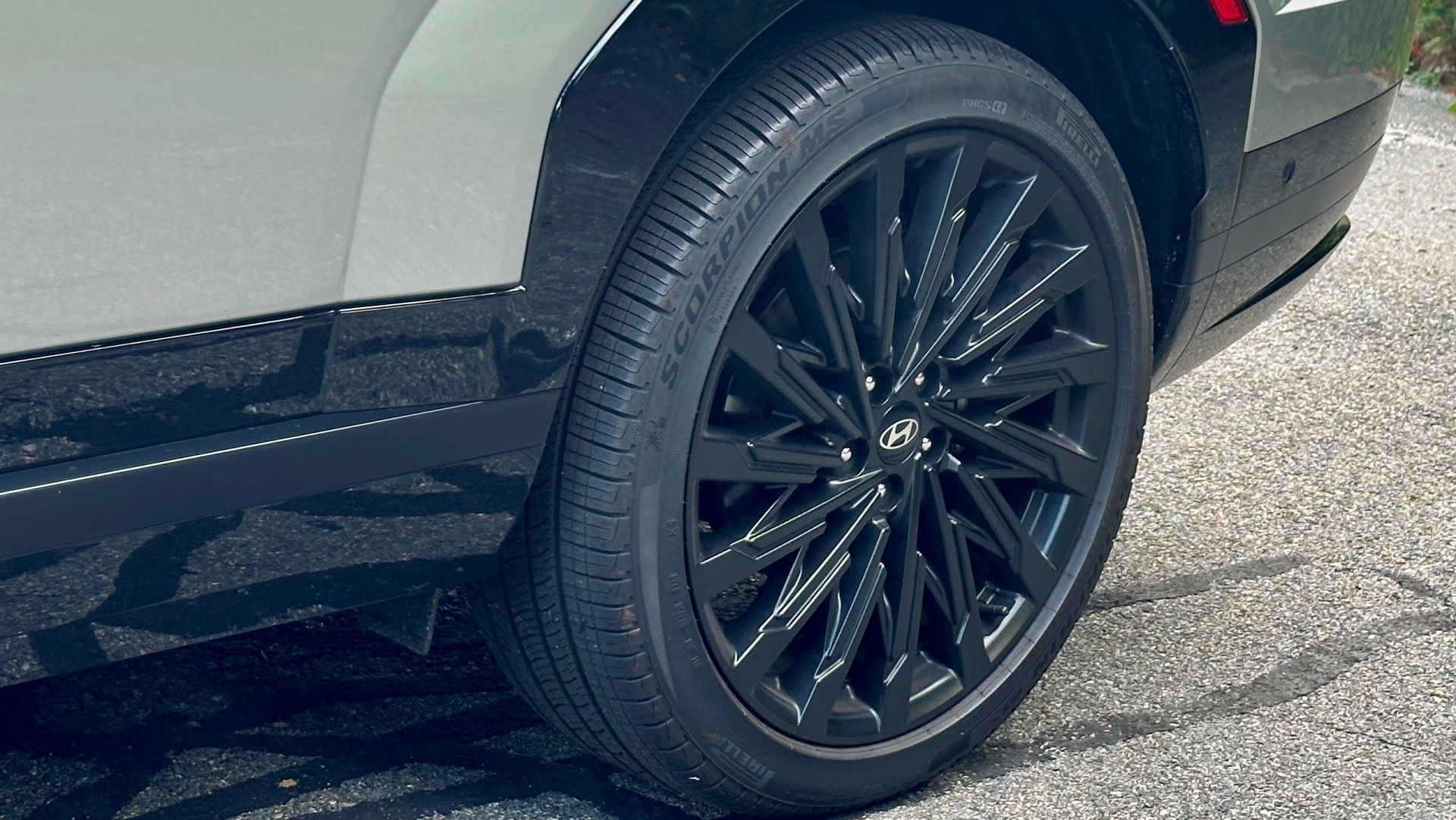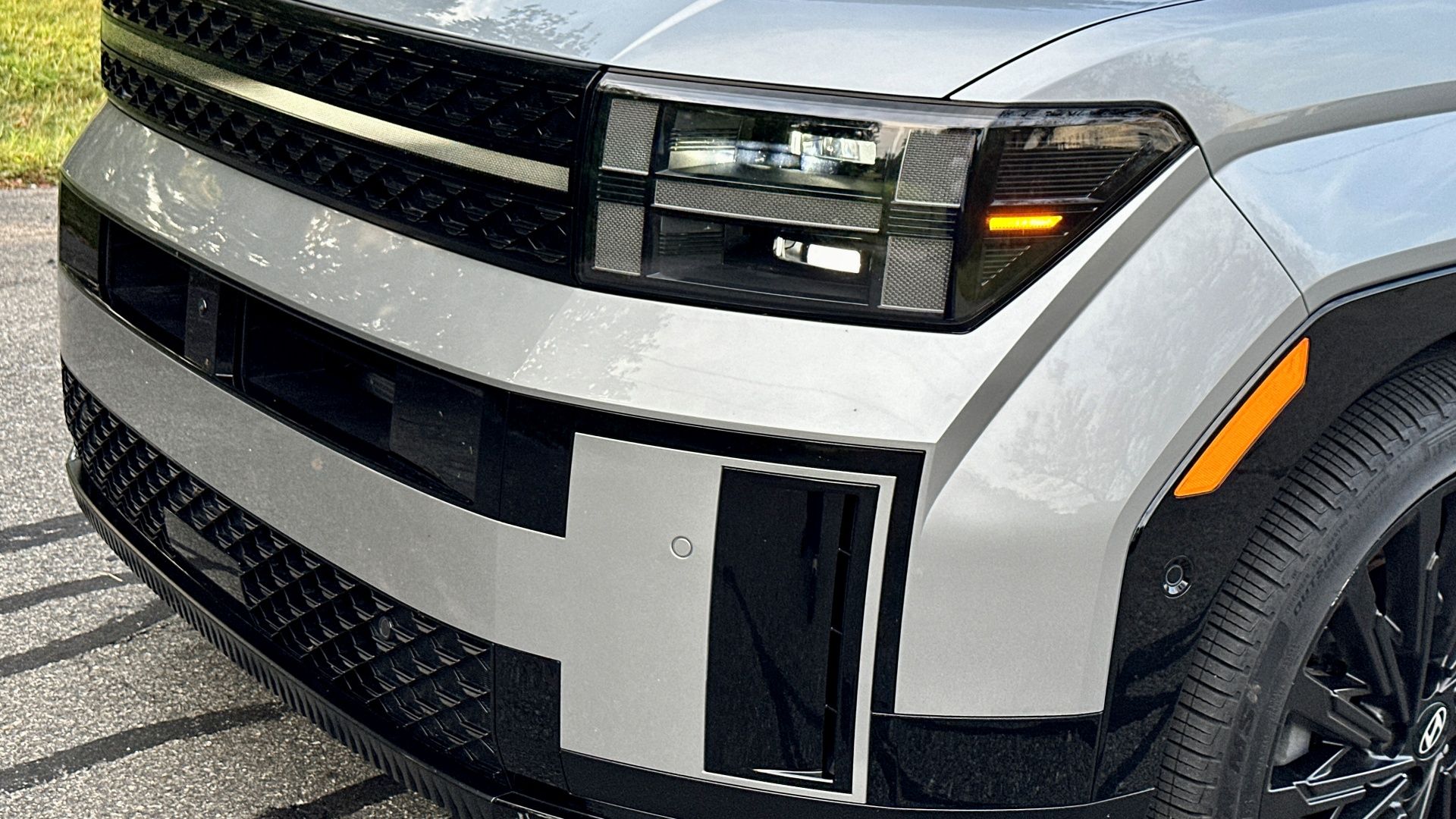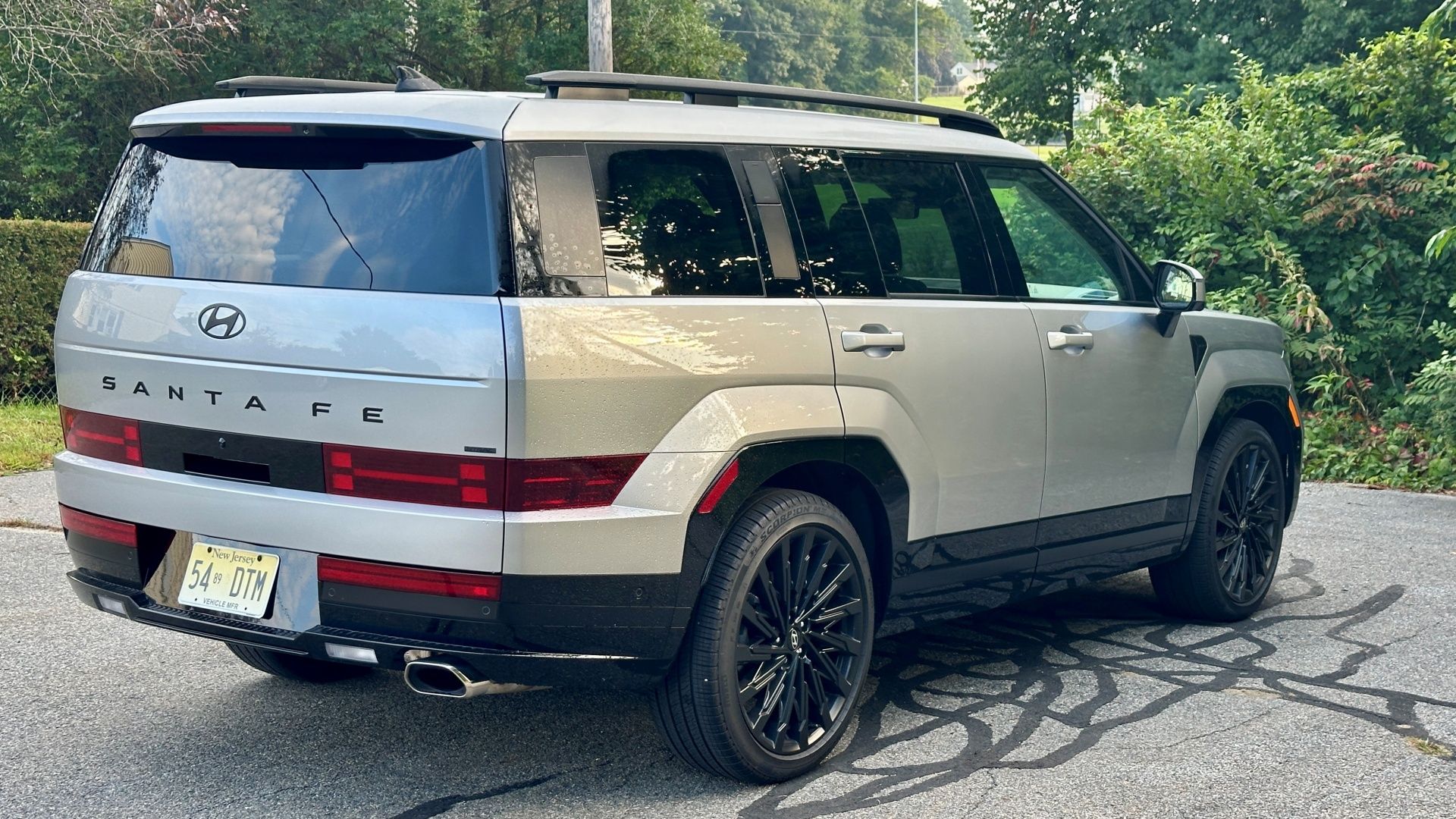The Hyundai Santa Fe is a three-row SUV that has undergone more than a few changes since it went on sale here roughly 24 years ago. This fifth generation of Hyundai’s family hauler shows off downright dramatic changes from just last year – forget about what it looked like at the start. The styling is so different that if you parked this year’s Santa Fe next to last year’s model, you would never guess it was the same vehicle. Not only is it physically larger, but the design is big and bold and extreme: There’s nothing mild-mannered about this Santa Fe and that’s a good thing.
In addition to its exterior styling, the Santa Fe shows off a new interior that includes three rows of seating, updated technologies, and all the features families need, including cupholders galore. There’s also a choice of gas or hybrid engines, both of which get solid fuel economy to help you stick to your budget. Hyundai really went all out with this model to make it a fantastic family vehicle, so we put it through its paces over the course of a week to see how good it truly is.
Exterior: This SUV Brought To You By The Letter H
Designers like to have a theme, and for the Santa Fe, that theme is the letter H. It’s everywhere. The taillights are shaped like an H and the same is true of the headlamps. Those headlamps also get a lightbar that runs along the hood to create another H. Even the design of the front fascia itself resembles the letter H. They could dedicate a whole episode of Sesame Street to this thing, and we’re not complaining. It makes the Santa Fe unique.
|
2024 Hyundai Santa Fe Exterior Dimensions |
|
|---|---|
|
Wheelbase |
110.8 inches |
|
Length |
190.2 inches |
|
Width |
74.8 inches |
|
Height |
67.7 – 69.7 inches |
|
Curb Weight |
4,343 – 4,575 lbs |
This SUV also grew this year, getting 1.4 inches taller and 1.8 inches longer. Combined with its boxy design, the Santa Fe looks much bigger no matter what the numbers say. That styling might have you thinking this is a full-size SUV, but it’s a mid-size that’s smaller than the Palisade, which has a total length of 196.1 inches.
There’s an interesting exterior feature tucked into the C-pillar of the Santa Fe, which we’ve picture above. It’s supposed to make reaching the roof easier, but we found it hit or miss. What looks like just the usual black trim hides a handhold that pops open when you press it lightly. The idea is that you can step up onto the tire or door sill and easily reach cargo stowed on the roof. That tire is high, so unless you have long legs, it’s a tough feat and grabbing the roof rail with both hands is easier. If you stand on the door sill, it’s a bit too far to the right to pull up, again unless you’re tall. It’s a nifty idea, but it’s not going to work well for everyone.
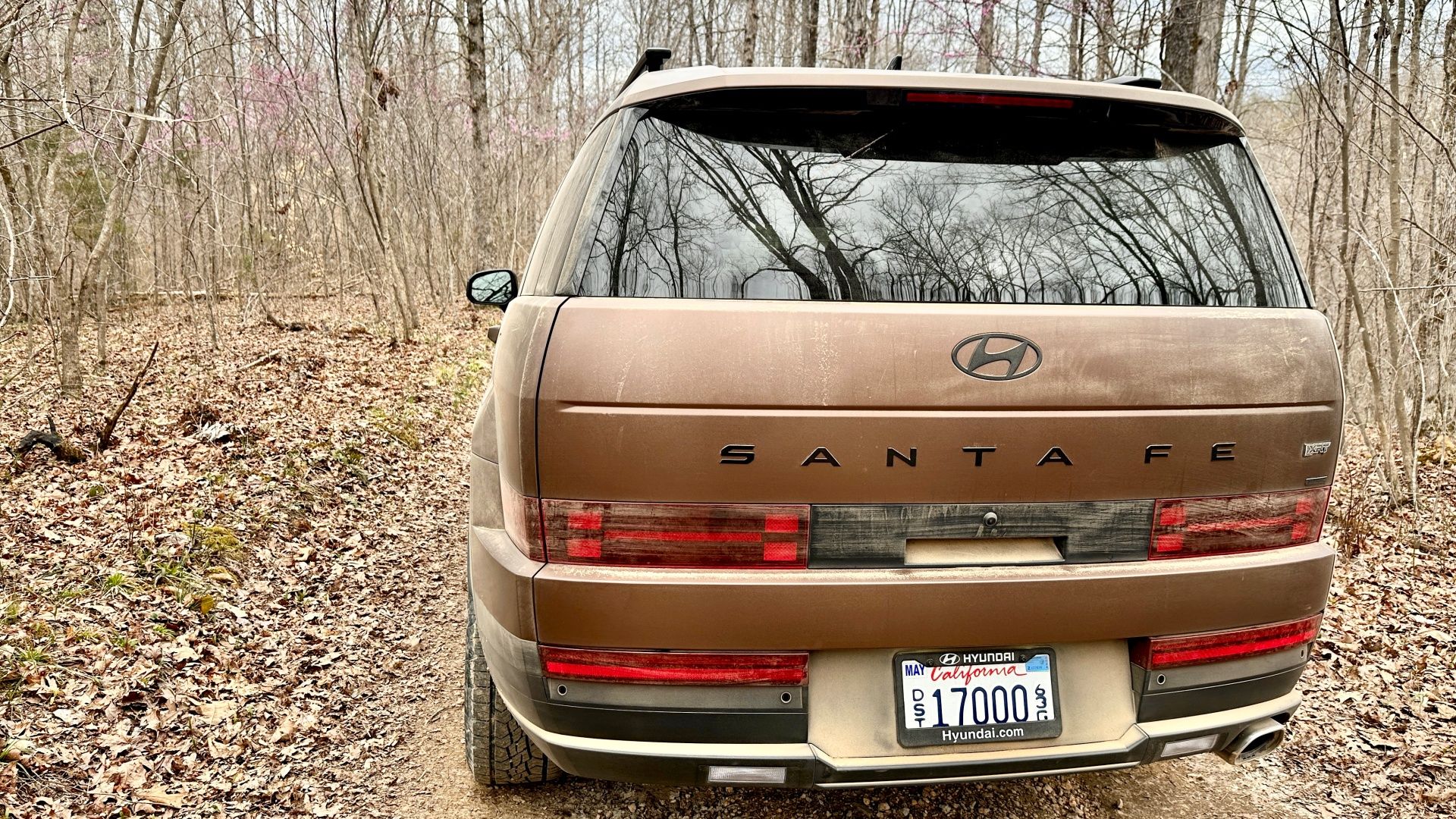 Get Ready To Rumble With the New XRT Trim
Get Ready To Rumble With the New XRT Trim
This Santa Fe is a great road tripper, but what if you want to do something a little more off-road? Hyundai has you covered with the new XRT trim. It has standard all-wheel drive with an extra 1.3 inches of ground clearance for handling uneven surfaces, along with 30-inch all-terrain tires on 18-inch wheels. There’s a higher tow rating of up to 4,500 pounds versus the usual 3,500 pounds when properly equipped, and it gets black and dark chrome exterior trim, including black roof rails, so it looks the part.

Add CarBuzz to your Google News feed.
Seating: Your Only Option Is Three Rows
The Santa Fe has been available in various seating configurations over the years, which is confusing. There was once a Santa Fe Sport with only two rows and a Santa Fe XL with only three rows, but now, it’s just the Santa Fe, and it’s a three-row SUV. Those three rows get more room now, thanks to a wheelbase that’s two inches longer. Available features include an eight-way power driver’s seat with four-way lumbar, a six-way power front passenger seat, heated and ventilated front seats, heated rear seats, and a heated steering wheel. You’re going to be comfortable.
If you opt for a second-row bench seat, then there’s seating for seven, and with the optional captain’s chairs, that goes down to six. The plus side to losing the extra seat is improved comfort. Adults will be perfectly happy for longer road trips in the captain’s chairs and so will older kids. The third row, well, that’s always the penalty box for adults, but they’re not terrible. Though very flat, they’re wide enough for adults with plenty of headroom and adequate legroom. There are also dual cupholders on each side, USB-C charging ports, and available air vents. This makes the third row fine for adults on short trips but keep it to the kids for anything long.
|
2024 Hyundai Santa Fe Interior Dimensions |
|
|---|---|
|
Max Headroom Front | Middle | Rear |
41.1 | 40.6 | 37.7 inches |
|
Legroom Front | Middle | Rear |
44.4 | 42.3 | 30 inches |
|
Shoulder Room Front | Middle | Rear |
59.5 | 58.1 | 53.5 inches |
|
Hip Room Front | Middle | Rear |
56.5 | 58.1 | 53.5 inches |
|
Cargo Space |
14.6 – 79.6 ft³ |
Hyundai also gave the Santa Fe something they call the driver’s relaxation seat that turns that seat into a La-Z-Boy recliner – and it’s brilliant. This available feature operates only when the car is not in motion, deploying a leg rest and tilting way back for easy napping. It’s perfect for a quick refresh on a road trip, but parents are going to love it for every day. The countless hours spent waiting for kids to get out of band practice, finish their soccer game, come out from dance class, or whatever, all become the perfect opportunity for a nap.
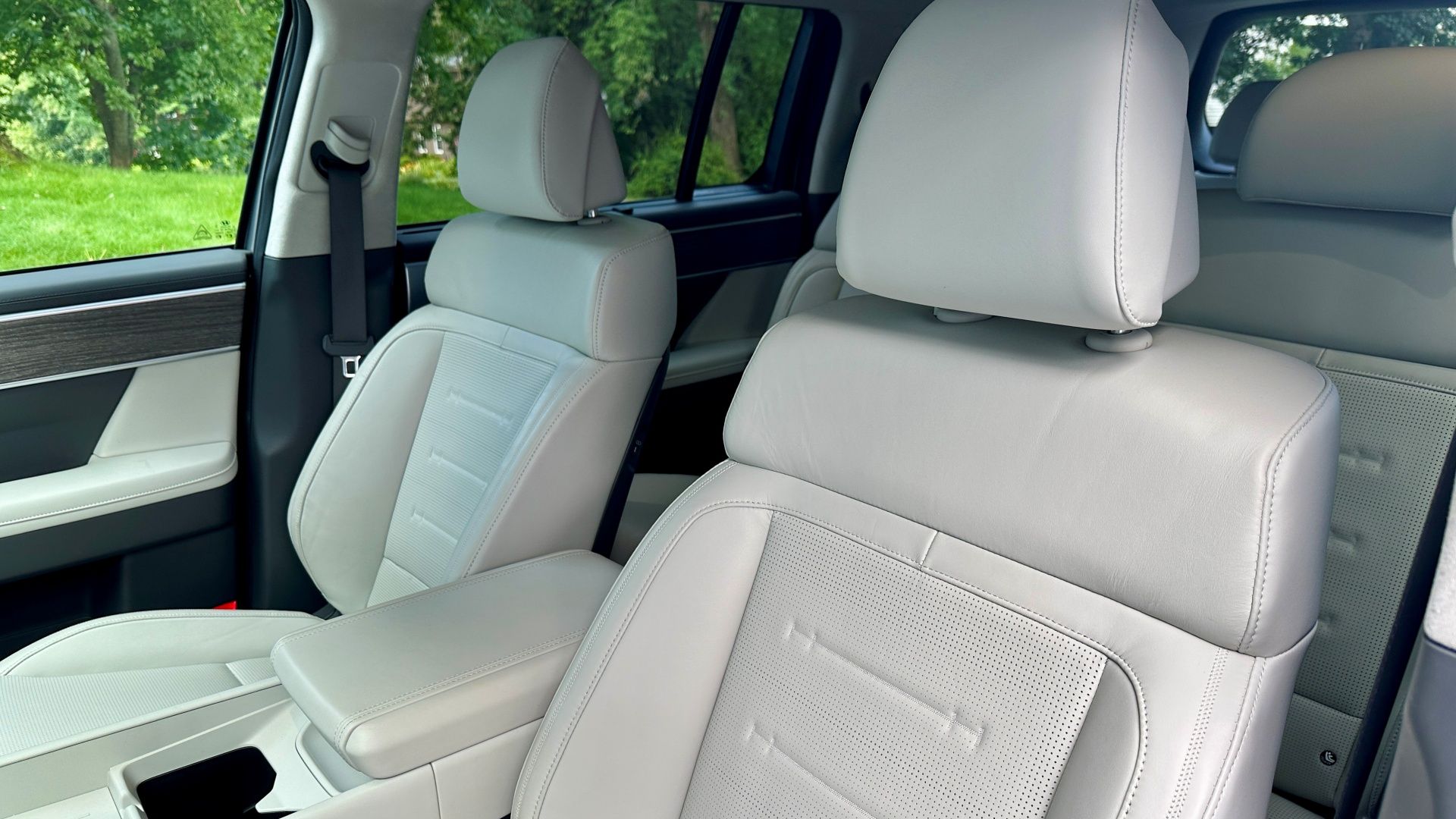 Interior: Small Details That Make All The Difference
Interior: Small Details That Make All The Difference
The letter H must have paid big bucks for this sponsorship because it’s everywhere again. The pattern on the seatbacks incorporates an H that’s subtle until you take a good look. On the backs of those seats, there are two little hooks for things like groceries, a purse, or school backpacks. They also incorporate an H into the design. We like it for being different from what’s in every other SUV, even those that come from Hyundai.
Depending on the trim you choose, materials vary from cloth to Nappa leather in the top Calligraphy trim, which was what we drove. It’s beautiful, and combined with the suede headliner, makes the Santa Fe look and feel more premium. Open-pore wood adorned the dashboard and the door panels for an additional touch of luxury.
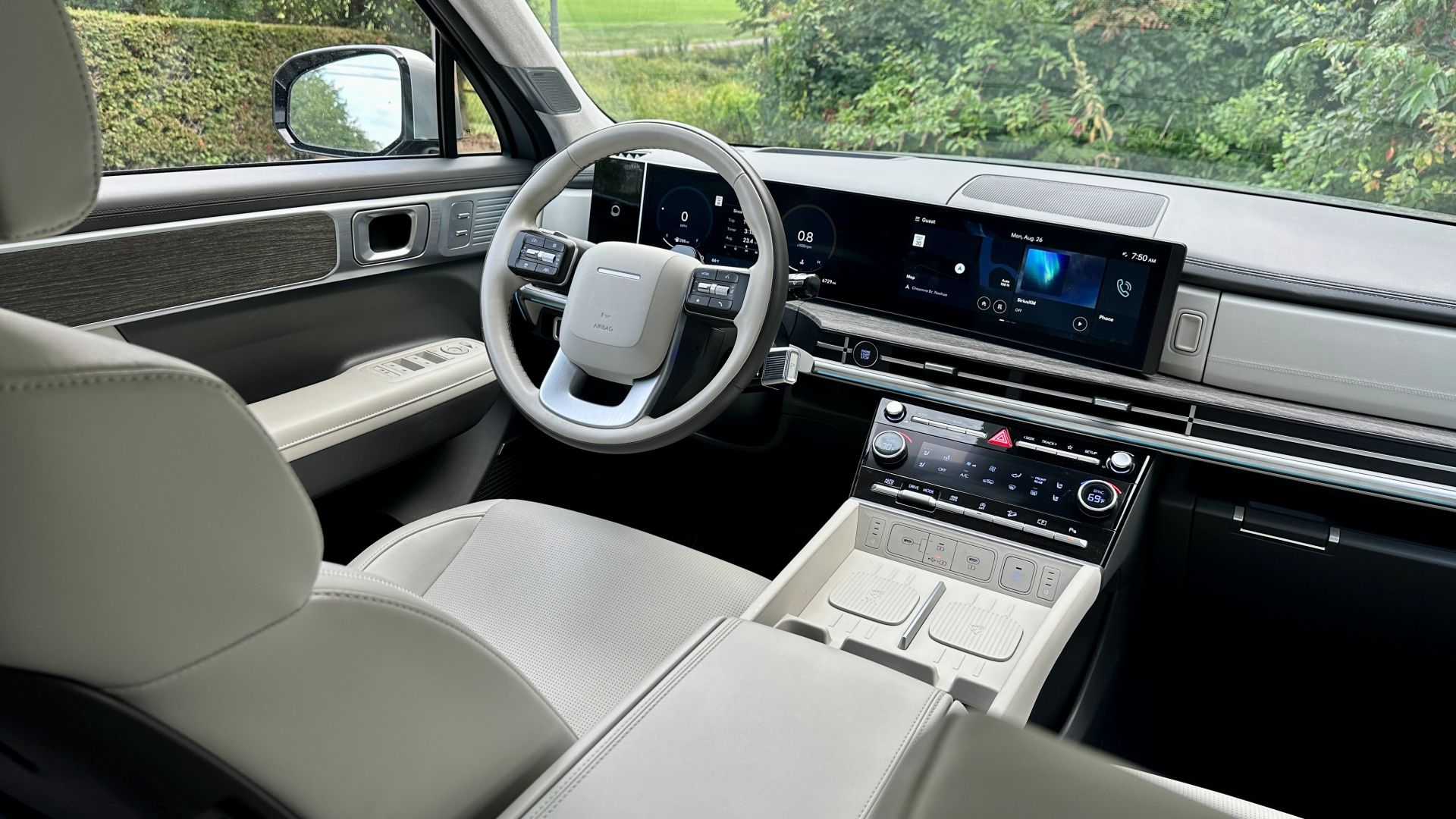 Infotainment: A Big Screen And Fantastic Wireless Charging
Infotainment: A Big Screen And Fantastic Wireless Charging
As is the going trend these days, the Santa Fe has a single display that houses both the available 12.3-inch digital instrument cluster and the 12.3-inch infotainment touchscreen. It curves slightly toward the driver while still being within easy reach of the passenger. Wireless Apple CarPlay and Android Auto keep you connected with two USB-C charging ports standard for both the first and second row. The top Calligraphy trim adds two more for the third row.
There’s also available wireless charging depending on the trim and the design is another one of those small details that makes a big difference. Automakers do these all sorts of ways, and they don’t always work. Sometimes they let your phone slide too much, so they lose their connection and stop charging. Sometimes they are so insecure that a sharp turn sends them flying off the center console to land underfoot, which is annoying and dangerous.
In the Santa Fe, the dual wireless charging pads securely hold phones flat on the center console, so they don’t slide around. If your phone somehow does manage to slide free, probably because you simply didn’t set it down right in the first place, the charging pads are recessed slightly so it’s very unlikely your phone will end up in the footwells.
Another bit of tech found in select trims is the UV-C sanitizer compartment. It’s located on the passenger side above the regular glove box. Simply pop it open and place your keys or phone or whatever germy thing you choose onto the rubberized surface. Push a button on the center console and a UV-C light activates for a 10-minute cycle to sanitize your stuff. You can still use it for storage if you choose, but if you’re a germophobe or simply want to make sure things are germ-free, you’ll find this a nice feature.
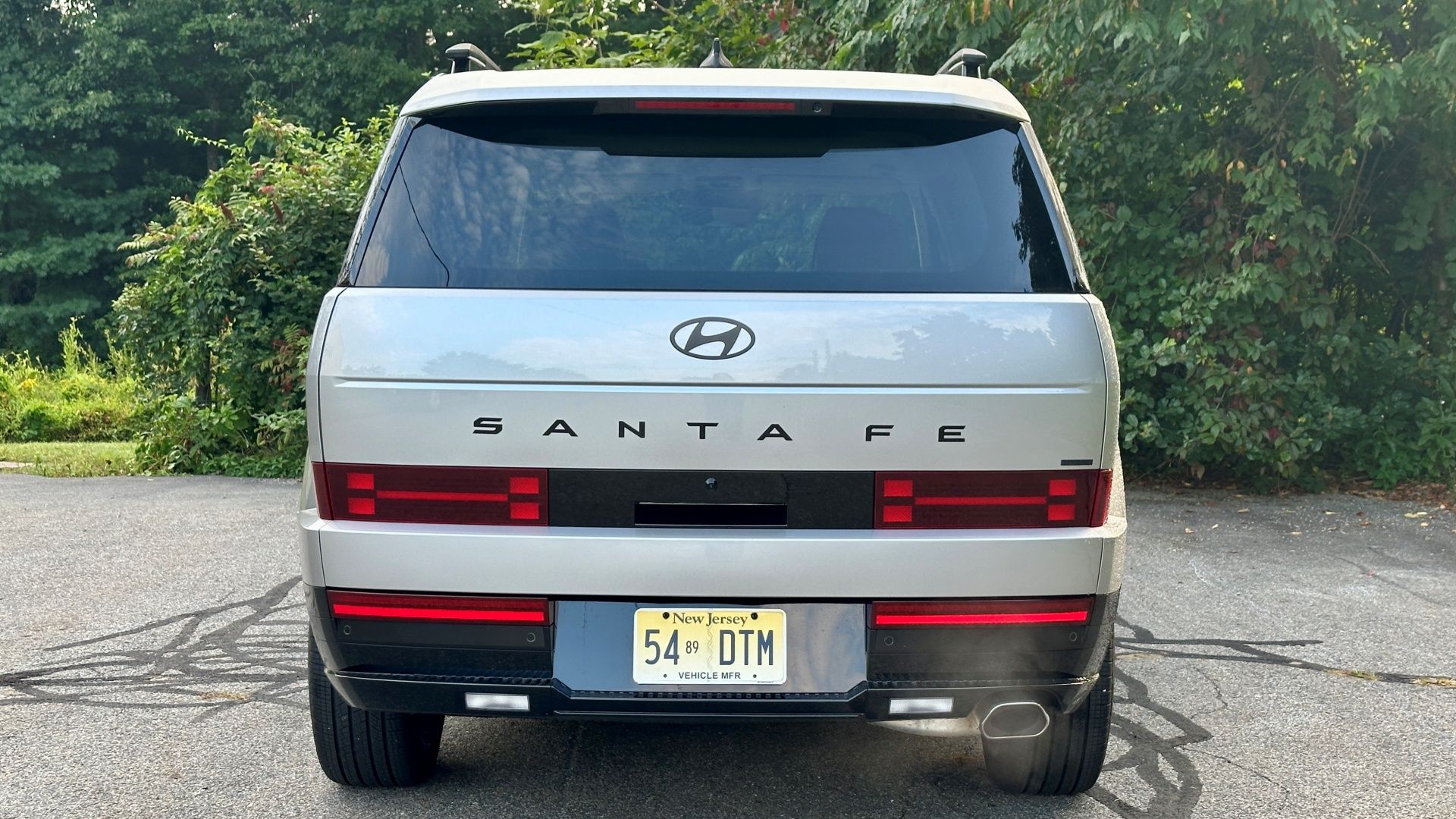 Cargo: A Massive Liftgate With Room For Everything
Cargo: A Massive Liftgate With Room For Everything
The Santa Fe has a massive liftgate. It looks huge when it’s closed and even bigger when it swings open to reveal the interior. It provides a great little roof if it’s raining and you’re trying to manage groceries. The opening measures 30 inches high and 44.5 inches across, which makes it ideal for handling items far larger than a gallon of milk and a loaf of bread.
Whether it’s supplies for a weekend project, everything you need for a week of camping, or the dresser you promised your buddy you’d help him move, there is a huge amount of cargo room in the Santa Fe. Take advantage of 14.6 cubic feet behind the third row, 40.5 cubic feet behind the second row, and 79.6 cubic feet behind the first row. Standard towing is 3,500 pounds with the XRT getting a bump to 4,500 pounds.
The good folks at Hyundai intended this to be a vehicle that can double as a camper. With the first and second rows folded, you can fit an air mattress back there instead of having to pitch a tent. It’s a truly versatile vehicle no matter how you intend to use all that cargo room.
Performance: Choose From Gas or Hybrid Engines
The Santa Fe is available with two engine options. There’s a choice of five trims with a 2.5-liter turbocharged 4-cylinder that delivers 277 horsepower with 311 lb-ft of torque. This is paired to an eight-speed automatic transmission. It gets an EPA-estimated 20/29/24 mpg on the city/highway/combined cycles with front-wheel drive, or 20/28/23 mpg with all-wheel drive. Only the XRT comes in lower with 19/26/22 mpg.
Three hybrid trims are offered with a 1.6-liter turbocharged 4-cylinder that delivers 231 net system horsepower with 271 combined system torque. This is paired to a six-speed automatic transmission. It gets an EPA-estimated 36/35/36 mpg (FWD) or 35/34/34 mpg (AWD).
There’s a fairly significant power difference between the gas and hybrid engines, making the gas option a more appealing choice for those who put a priority on performance. That does, however, come at a sacrifice in fuel economy. This is especially true of the XRT, which has standard all-wheel drive and gets the lowest fuel economy of the lot.
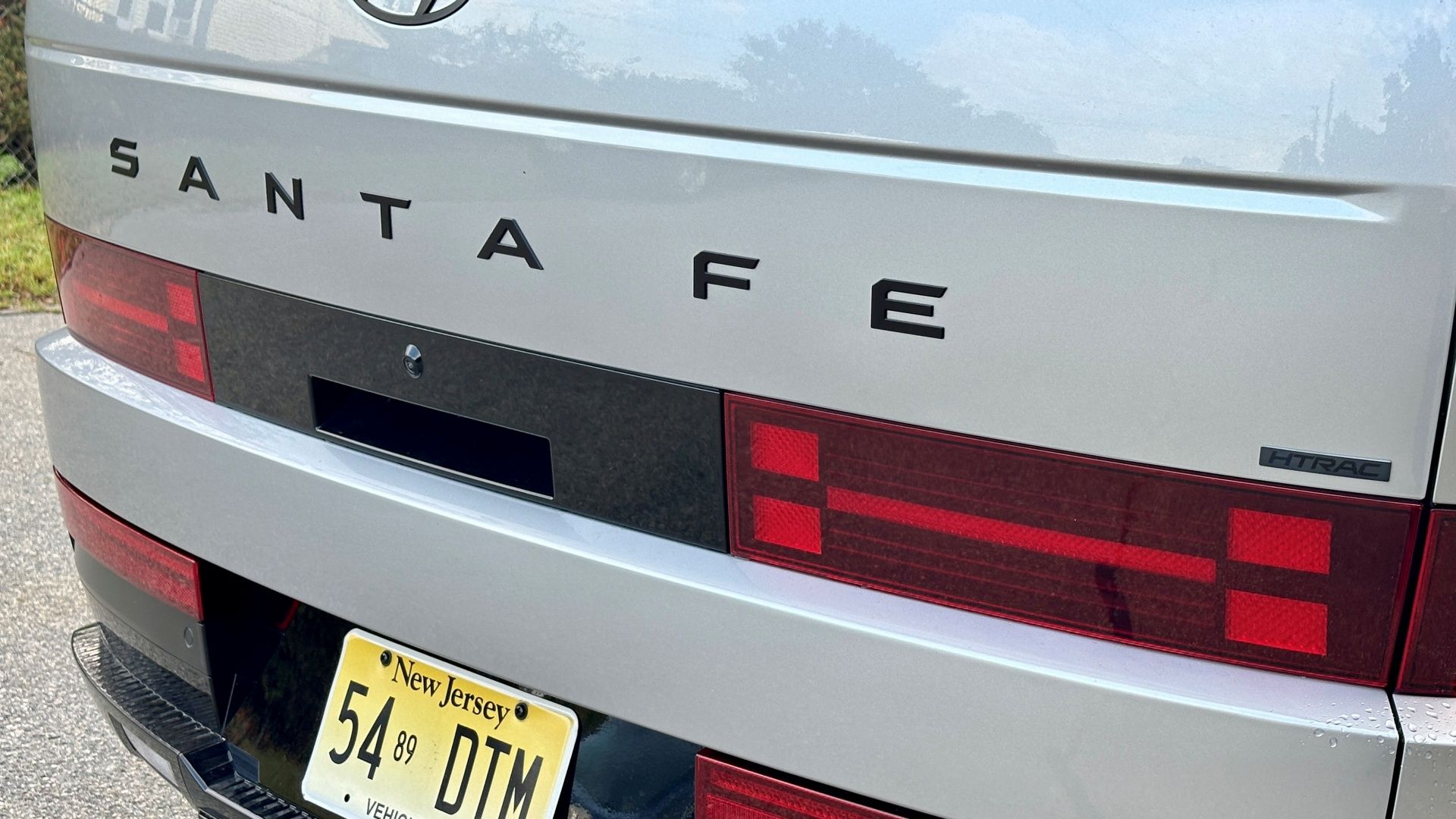 Drive Impressions: Fun To Drive, But Not Sporty
Drive Impressions: Fun To Drive, But Not Sporty
The Hyundai Santa Fe is a large SUV, so unsurprisingly, it’s not at its best on winding country roads. Those who want a more sporty option should take the Mazda CX-90 out for a test drive. Still, it fared better than average in that scenario without intrusive body roll. Where it excels, however, is on the highway where it is quiet, responsive, and easy to drive.
We spent our time in the top Calligraphy trim with the gas engine and found plenty of power to move the Santa Fe’s bulk. It got up to speed easily and handled well, with more relaxed steering that’s easy on the driver for less tiring road trips. Acceleration was strong, but also quiet. No one wants a noisy engine that could wake snoozing kids. This is a family vehicle, so it needs to be amenable to naps. The Santa Fe’s engine is notably quiet with minimal road and wind noise, too.
Shifts are smooth, even under hard acceleration, again letting passengers relax rather than jolting anyone awake. Our one gripe continues to be the gear shifter placement. It’s on a stalk on the right side of the steering column, but it’s largely hidden by the wheel. To see which gear you’re in, you have to lean a bit out to the side, which is somewhat awkward.
During the first drive of this vehicle, we had the opportunity to take the XRT trim off-road and wanted to mention that experience here. Although you’re not going to tackle the kind of terrain a Jeep Wrangler can handle, this trim is surprisingly capable. Loose rocks, uneven dirt trails, and steep inclines and descents were all easily managed.
Pricing and Verdict: Plenty Of Choices Let You Get The Right Features For The Right Price
There are five Santa Fe trims, all of which are available with a gas engine and three that are offered as a hybrid. There’s also a choice of front-wheel or all-wheel drive for all of those trims except the all-wheel drive only XRT. This makes it easy to find a version of the Santa Fe that has the features you want at a price you can manage.
|
2024 Hyundai Santa Fe Pricing |
|||||||
|---|---|---|---|---|---|---|---|
|
Gas |
Hybrid |
||||||
|
FWD |
AWD |
FWD |
AWD |
||||
|
SE |
$33,950 |
$35,750 |
$36,950 |
$38,750 |
|||
|
SEL |
$36,450 |
$38,250 |
NA |
NA |
|||
|
Limited |
$43,350 |
$40,600 |
$43,850 |
$45,650 |
|||
|
XRT |
NA |
$45,150 |
NA |
NA |
|||
|
Calligraphy |
$46,500 |
$48,300 |
$47,000 |
$48,800 |
|||
That puts the range of pricing as low as $33,950 and as high as $48,800, excluding $1,415 destination. It all depends on just how much you want on the features front. The base SE is more modest though still attractive, while the Calligraphy adds comfort and convenience features. You’ll get the basics no matter which you choose, so it’s all a matter of what your budget allows.
The 2024 Santa Fe is a great choice for families. It has the room to handle people and cargo along with a range of beautiful interiors. It has an efficient gas engine, but for those who put a priority on fuel economy, there are a limited number of hybrid trims as well. Combine that with a smooth, comfortable ride and pricing under $50,000 even in its most luxurious guise, and the Santa Fe is a win for families.

